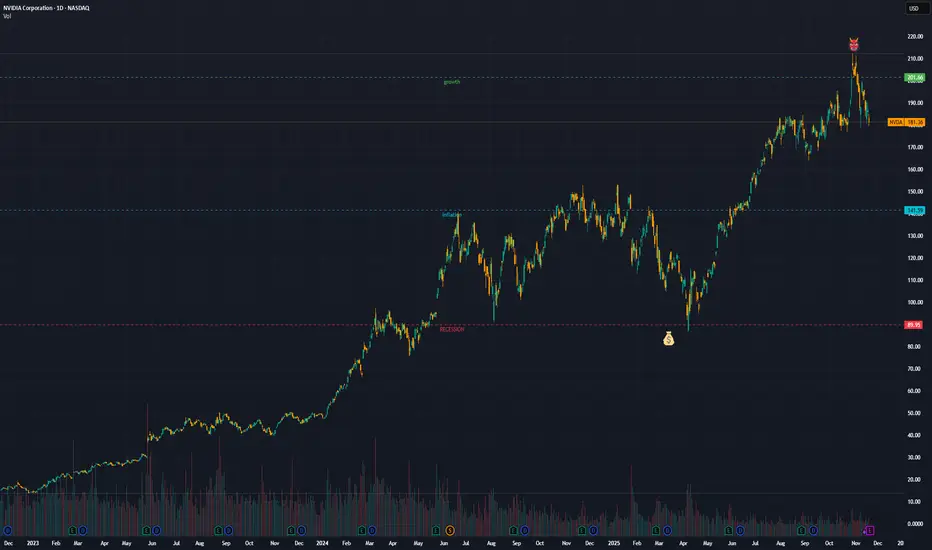Why RSUs and Working Capital can distort the real story
Most investors see two big numbers and get excited:
✔ huge buybacks
✔ huge operating cash flow
But rarely do they understand what’s actually happening behind the scenes.
Let’s break down NVIDIA’s latest filings in simple, real numbers.
🔹 1. RSUs Inflate Share Count — Buybacks Don’t Always Reduce It
Everyone loves to hear “the company is buying back shares.”
But here’s what most investors don’t realize:
RSUs (employee stock awards) create new shares → dilution.
Buybacks must first neutralize that dilution before reducing total shares.
Let’s look at NVIDIA’s own numbers (Q1 FY2026 – Apr 2025):
▶ Shares Issued from Stock Plans: +50M
▶ Shares Withheld for Taxes (RSU taxes): –13M
▶ Shares Repurchased: –126M
📌 Net share reduction = 126 – 50 + 13 = 89M
This means:
Although NVIDIA spent $14.5B on buybacks, the true reduction was only 89M shares.
And the cost?
▶ “Issuance (Retirement) of Stock, Net” = –$13.725B (Q1)
▶ Q2: –$23.445B
▶ FY: –$33.216B
This is not real reduction — it’s a treadmill:
RSUs add shares
the company buys back shares
RSUs add more
the company buys back again
If NVIDIA ever stopped buybacks for even one quarter,
shares outstanding would jump instantly.
🔥 Simple Example (for investors):
Start of quarter: 1,000M shares
RSUs issued: +40M → 1,040M
Buybacks: –50M → 990M
The investor thinks they bought back 50M shares.
In reality?
➡ True reduction = only 10M.
➡ 80% of buybacks were just neutralizing dilution.
This happens every quarter.
🔹 2. Working Capital Boosted Cash Flow — Not Operations
Look at NVIDIA’s operating cash flow (OCF):
Q1 FY2026 OCF: +$27.414B
But the key line is this:
Changes in Working Capital: +$8.654B
This means:
$8.6B of the operating cash flow came from timing of receivables, payables, and inventory — NOT from actual operations.
This is crucial because:
✔ It’s cyclical
✔ It’s temporary
✔ It reverses next quarter
Example from the next periods:
Q2 FY2026 “Changes in WC”: –$2.368B
FY2025: –$9.383B
Q4 FY2025: –$3.520B
Working capital swings can boost or crash cash flow without any change in real profitability.
🔥 Why This Matters
Investors often misinterpret:
🚫 A jump in Operating Cash Flow
= “Strong business performance”
But many times:
✔ It’s just Working Capital cycling
✔ Not improved EBITDA
✔ Not improved margins
✔ Not better demand
✔ Not better efficiency
It’s accounting timing, not operational strength.
🔹 3. The Combination Can Mislead Investors
In a single quarter, NVIDIA showed:
✔ +8.6B boost from WC
✔ $14.5B spent on buybacks
✔ Net true share reduction only 89M
This creates the illusion of:
higher OCF
higher EPS
fewer shares
But much of this stems from:
accounting timing (WC)
neutralizing dilution (RSUs)
Not from:
organic profitability
sustainable improvements
🔥 Conclusion: What Every Investor Should Watch
If you want to understand the real strength of a company, focus on:
✔ Net Shares Change (after RSUs)
Not just “buybacks.”
✔ OCF minus Changes in Working Capital
Not the headline OCF.
✔ True organic cash generation
Not timing effects.
✔ SBC (Stock-Based Compensation)
Because SBC = dilution = more future buybacks.
📌 Final Wake-Up Call
RSUs inflate share count.
Buybacks only offset them.
Working capital inflates cash flow.
Neither guarantees stronger fundamentals.
If you want to see the real story,
you must look beneath the headline numbers.
Disclaimer
The information and publications are not meant to be, and do not constitute, financial, investment, trading, or other types of advice or recommendations supplied or endorsed by TradingView. Read more in the Terms of Use.
Disclaimer
The information and publications are not meant to be, and do not constitute, financial, investment, trading, or other types of advice or recommendations supplied or endorsed by TradingView. Read more in the Terms of Use.
